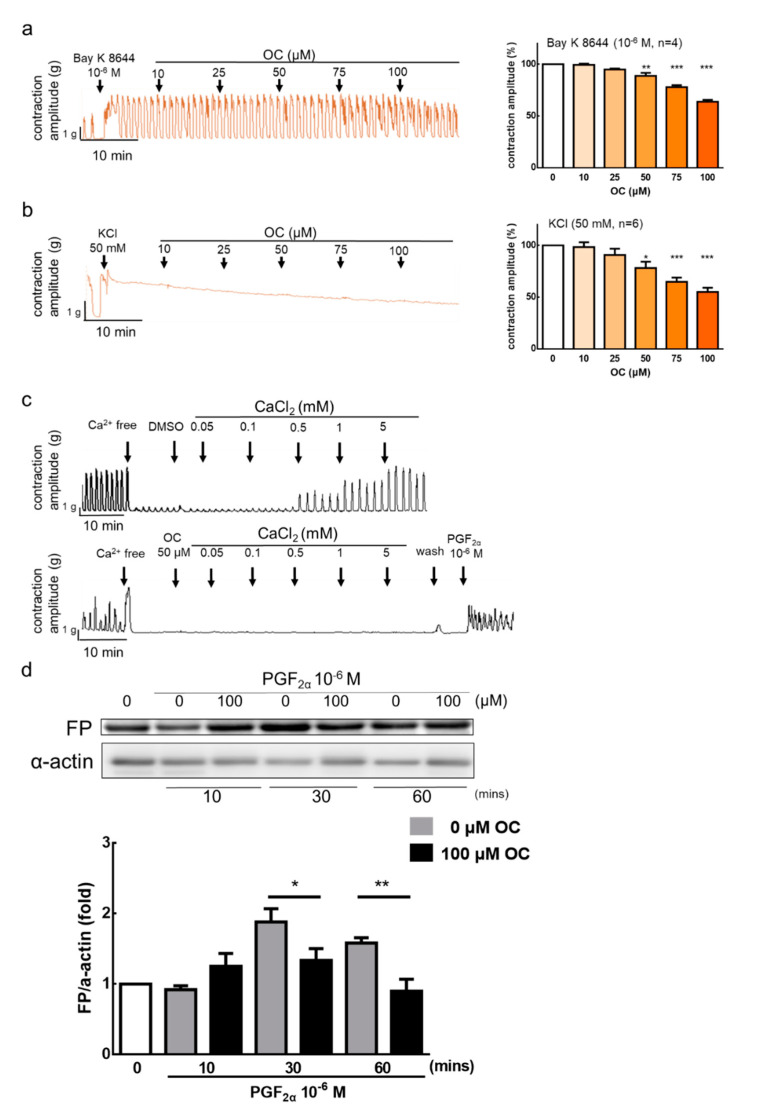Figure 2.
Inhibitory actions of oleocanthal on Ca2+-dependent contractile responses. Oleocanthal (OC) (10–100 μM) was administered after (a) Bay K 8644 and (b) potassium chloride (KCl). The effect of OC on the mean peak amplitude was calculated. Data are presented as the mean ± standard error of mean (SEM) (n = 3–6). * p < 0.05, ** p < 0.01, *** p < 0.001 versus 0 μM. (c) Ca2+-free medium containing the vehicle (0.2% dimethyl sulfoxide (DMSO)) or OC 50 μM for 60 min, and calcium (0.05–5 mM) was then cumulatively applied to trigger muscle contraction. We determined the cytotoxicity of oleocanthal by removing the oleocanthal and washing the tissue with Krebs’ solution, then reanalyzing the tissue in the presence of a stimulus (10−6 M prostaglandin F2α (PGF2α)). (d) PGF2α receptor protein expression was set at different time points in rat uterus by treatment with oleocanthal (100 μM). Data are presented as the mean ± standard error of mean (SEM) (n = 5). * p < 0.05, ** p < 0.01, versus vehicle group. FP: Prostaglandin F receptor.

